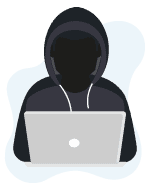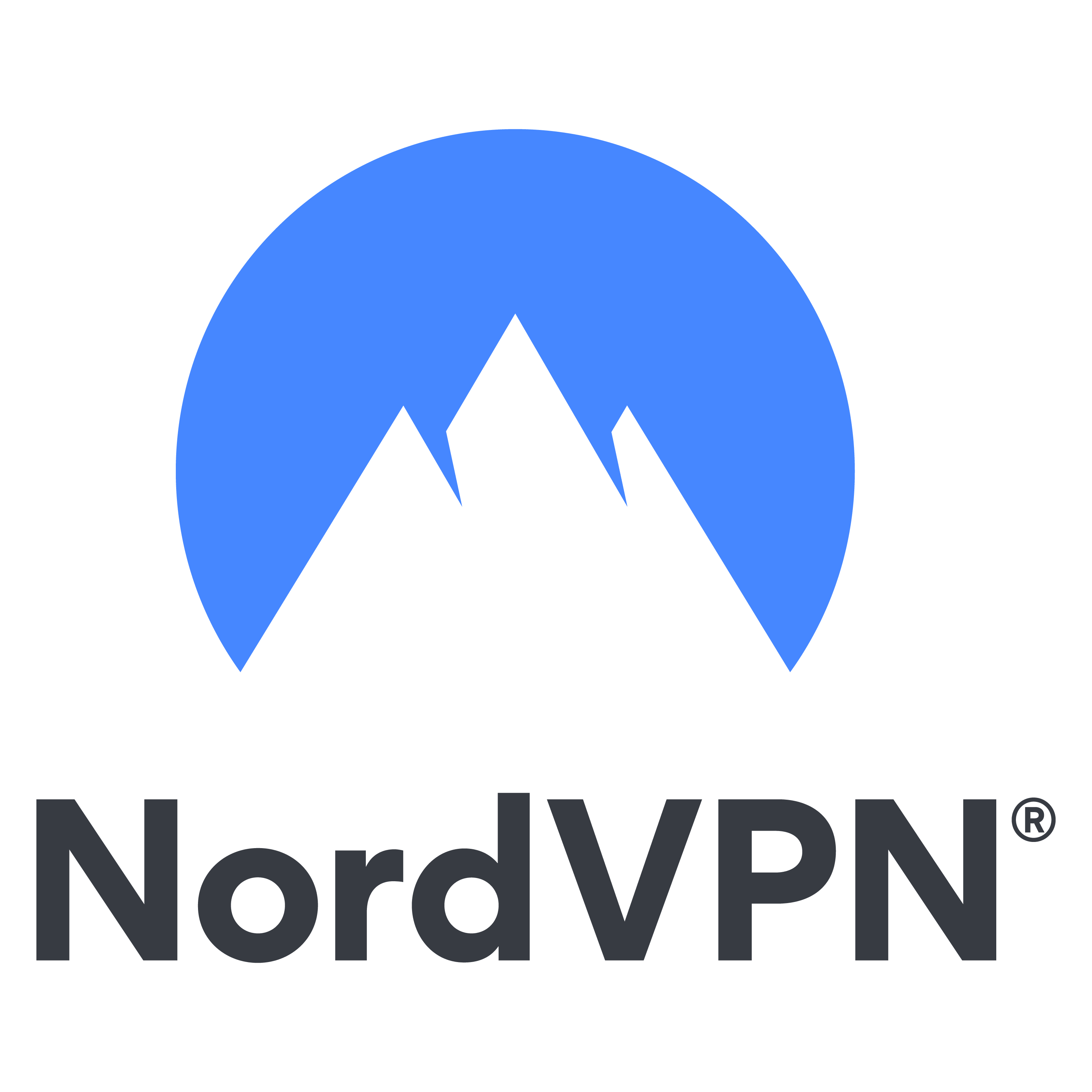Tor is a special web browser that anonymizes your internet traffic by sending it through multiple Tor computers. This ensures that nobody is able to see where data is coming from and where it’s going. Tor browser makes it difficult for governments or websites to link your browsing activity to you and therefore enhances your privacy online. But is it safe to use Tor?
Well, like any other system, it has its weaknesses. Your system can still be hacked, you can still get malware when browsing with Tor — especially if you use it to access the dark web. It’s highly advisable to take some precautions when using the Tor browser:
- Use the Safest option when determining your security level. This option can be found by going to the Privacy & Setting in the menu.
- Make sure you have reliable antivirus software installed on your device to protect against viruses and other malware.
- Use a good VPN along with Tor. This will add an essential extra layer of security to ensure none of your information is visible to third parties. We recommend NordVPN as it’s highly secure and user-friendly.
Read the full article below for everything you need to know about staying safe while using Tor browser.

For many, The Onion Router (Tor) has become a household name. It’s a guaranteed safe way to stay anonymous on the internet. In theory, no one can see what you’re doing online when you use the Tor browser. Moreover, it’s one of the easiest ways to access the dark web.
Over the past years, however, it has become apparent on multiple occasions that Tor’s security suffers from some serious problems. The FBI, CIA, and NSA have all been able to crack Tor’s security. So is Tor safe to use? Is it still a decent way to anonymously surf the web?
The short answer is yes. You can use Tor browser to surf anonymously. However, we strongly discourage you from using just Tor for online protection.
Multiple incidents have shown that unsafe use of Tor can result in a severe privacy leak or even issues with your online safety. Think of viruses, criminals, and hacks. This article will shed some more light on these problems with Tor.
To protect yourself as well as possible, it’s best to use Tor browser in combination with a decent virtual private network (VPN) and an antivirus. A trustworthy VPN you could consider is NordVPN. This service has excellent encryption, is very user-friendly, and has thousands of servers available for you to choose from.
- Excellent protection and a large network of servers
- Nice and pleasing application
- No logs
How Tor Works
Tor browser is a special browser that anonymizes your internet traffic. Your data is sent past multiple Tor computers. With this process, the browser ensures that outsiders are unable to see where that data came from and where it’s going.
In other words: Tor browser makes it a lot more difficult for websites and even governments to link your online browsing behavior back to you. At every stop (or node) that Tor uses to cloak your data, an extra layer of encryption is added or removed, depending on which way the traffic is going. Therefore, using the Tor browser should result in a safe and anonymous internet experience.

Using Tor isn’t illegal. The browser is used by many different people, among them those who would like to stay anonymous because they’re using the platform to criticize the dictatorship of the country they’re living in.
In these cases, Tor ensures freedom of speech. People using Tor still have the possibility to speak freely about political issues, without having to fear getting prosecuted for it.
Simultaneously, there are also people that use the Tor browser out of principle. They simply don’t want to be tracked by companies and marketers. However, it has come to light that Tor isn’t as safe as we all assumed.
Tor’s Safety Breached
Several court cases have shown that illegal activities on the dark web can sometimes be traced back to specific individuals using Tor browser. Hence, it seems possible to discover and collect a user’s data — including their IP address — even when they are being protected by Tor.

In the past, Tor users have been found out because the National Security Agency (NSA) in the U.S. owned a huge part of the Tor nodes. The NSA could clearly see who used those nodes. This was problematic for users who concern themselves with illegal practices. The moment those users are identifiable, the police can track them down and arrest them.
Tor is no longer as safe as it once was. Hackers constantly attempt to breach Tor’s security. Many groups, organizations, and individuals want access to the information Tor browser is hiding and try to get that time and again.
In 2014, one group of researchers succeeded. Financed by the government, they took a closer look at Tor browser and were able to collect information from the browser for months on end.
Weaknesses in the Tor software can surface in less compromising ways, as well: in 2017, users found a leak that could easily make IP addresses of Linux and macOS users visible.
Of course, Tor didn’t sit around to watch all this happen: whenever a possible leak in the system was discovered, those leaks were patched as soon as possible.
Which Risks Do I Face When I Use Tor?
 Practice shows that Tor isn’t 100% safe. Like every other system, it has its weaknesses.
Practice shows that Tor isn’t 100% safe. Like every other system, it has its weaknesses.
Even though leaks are constantly being patched, you can never be sure whether these patches happen in time. Aside from this, there are more reasons to be worried about the safety that Tor offers. Here are a few.
First of all, Tor users are regularly hacked. This usually isn’t Tor’s fault. Instead, these hacks are possible because the user’s device is insufficiently protected.
This could happen to anyone, which means every user should be aware of it. Criminals, viruses, and other malicious content could be hiding on the web pages you visit — especially when you’re surfing the dark web. Therefore, it’s always important to carefully consider every click.
A second danger is that you could still be tracked online, even when using Tor. Bad exit nodes are one example of how this could happen.
As illustrated in the picture at the top of this page, an exit node is the last stop before you’re connected to a website or page. If the person who controls this node wants to, they could see all the traffic passing through it. If this happens — as was the case with the NSA — your internet data is no longer private. There’s someone else who can directly see which pages you’re visiting.
One thing worth mentioning is that you usually do stay anonymous in such a situation. Even the owner of the exit node isn’t able to trace down the source of the data, because it’s been through at least two other nodes before that.
Can I Use Tor Browser for Anonymous Browsing?

You won’t have to worry too much about people trying to track you online if you only use Tor to browse the regular web. For most governments and other parties, that kind of traffic isn’t relevant enough to trace. Instead, they focus on uncovering illegal activities, some as horrifying as the spreading of child porn on the dark web.
Moreover, there’s no need to be wary of the initial intended audience of Tor either. Tor was initially built to allow for anonymous communication within the US Navy. Some people fear that the US Navy still has secret access to the traffic going through the browser.
This is, however, not at all the case. Because Tor is open-source, official organizations like the Navy won’t be able to hide any secret entrances within the code. Open source means that everyone has access to Tor’s code. An oddity, therefore, would be discovered and eliminated within moments.
In short, if you use the internet for general browsing, you don’t have too much to fear. Any online surveillance very likely won’t focus on you. However, this doesn’t mean you should use Tor without a care in the world. Before you tackle the internet with this browser, you should be aware of the dangers of the dark web.
Beware: Tor and the Dark Web
 Tor allows you to access this hidden part of the internet. Other popular browsers, such as Google Chrome, Microsoft Edge, and Firefox, can’t do this. The dark web is part of the much bigger deep web.
Tor allows you to access this hidden part of the internet. Other popular browsers, such as Google Chrome, Microsoft Edge, and Firefox, can’t do this. The dark web is part of the much bigger deep web.
The dark web is unregulated and, therefore, quite fascinating. Sometimes it’s even terrifying. It contains bizarre websites you’d never encounter on the ‘normal’ internet. Among other things, you could come across marketplaces for drugs, weapons, and illegal credit cards.
Not every website on this dark part of the internet is as dodgy as this. Some pages allow people to speak their minds freely without having to fear prosecution from a dictatorial regime. The unregulated nature of the dark web results in a space that holds both the best and the worst of humanity.
Tor gives you access to the entirety of the dark web: it’s internet freedom in a browser. However, this freedom isn’t always safe.
Always be careful when you use Tor to visit the dark web. This part of the internet isn’t monitored, meaning it can be very dangerous for you and your computer. Try not to get caught up in websites that infect your computer with malware. Stay away from websites that concern themselves with illegal activities. And finally, beware of hackers — they’re hiding everywhere.
A Glance at Tor’s Safety Features

Tor is the centerpiece of the internet safety niche. No other browser matches its security features and encryption abilities. But what safety tools does Tor offer exactly?
By default, you don’t need to make many adjustments apart from choosing among Tor’s security levels. The browser automatically applies the following out-of-the-box:
- Blocks fingerprinting and tracking
- Clears history and forms data
- Cloaks your IP address
That’s why you’ll notice that Tor doesn’t launch instantly as other web browsers do. This is due to the tedious but necessary process whereby Tor connects to several circuits that contain relays, layers, proxies, nodes, servers, and bridges. It’s an integral part of the anonymization and encryption process that is there to shroud you in as much privacy and anonymity as possible.
Tor Browser Onion Services
Simply put, an onion service is a website that can only be accessed through the Tor network. Tor Browser provides an option to prioritize onion services when available.
Some websites you can access on a regular browser (such as Mozilla Firefox or Google Chrome) also have onion services. News websites like the New York Times and BBC News have onion services for people who may not be able to access their public websites because of government censorship.

An onion service’s address looks different than a regular link. An onion address is a string of 56 mostly random letters and numbers that ends with “.onion”.
So, for instance, the Freedom of the Press Foundation’s regular website address looks like https://freedom.press but its onion address is http://fpfjxcrmw437h6z2xl3w4czl55kvkmxpapg37bbopsafdu7q454byxid.onion/.
When your Tor browser is on an onion service, you’ll see an icon of an onion beside the website’s URL.

Tor Browser Security Levels
Your browser’s security level setting balances its ability to load website features and protect the user’s security. The fewer website features Tor browser enables, the more secure your surfing session becomes.
To make changes to your security level, simply do the following:
- Click on the hamburger icon in the top right corner of your browser.
- Choose “Options.” A new tab should open with the address “about:preferences”.
- From the menu on the left, pick “Privacy & Security.”
- Scroll down until you find “Security Levels.”

All three of the security level options are vastly different and result in an equally different browsing experience.
The Standard setting is the default setting and enables all website features.
The Safer setting disables potentially risky website features, which can cause some websites to stop functioning normally. It also blocks JavaScript on non-HTTPS websites and makes WebGL, audio, and video files click-to-play.
The final setting, Safest, is the strictest setting. It blocks all website functions except for fundamental features and basic services. This setting has a harsh effect on media, scripts, and images. JavaScript is also disabled on all sites, which can cause websites to stop functioning completely.
If you are looking for an optimal level of security, then you should stick to the Safest setting. Casual users of Tor should be fine with a more balanced and relaxed setting like Safer.
Integration between Brave Browser and Tor

Brave Browser, initially released in 2019, is a free, open-source privacy-focused web browser that is widely used and well-known as a strong advocate for online privacy and safety. Brave also boasts built-in ad-blocking capabilities, as well as BAT cryptocurrency user rewards.
Privacy aficionados will know that Brave has famously partnered up with Tor by managing some of their connection relays. It has also integrated Tor functionality into its browser.
This feature within the Brave browser is called the Private Tabs with Tor mode, which is currently available only for the desktop version of Brave browser.
Within the desktop version of Brave browser, you’ll find a menu in the top right corner containing the following options:
- New Tab
- New Window
- New Private Window
- New Private Window With Tor

The first two options refer to the regular browsing you likely already do with your default browser. In these modes, anonymity functions and clearing of search history do not take place.
The New private window option is Brave’s own anonymous mode, similar to Google Chrome’s Incognito mode and Mozilla Firefox’s Private window. Using this option does not anonymize you in any way, but it does clear your search history, forms, cookies, and site data.
The New private window with Tor option reroutes your connection through three computers in the Tor network, which anonymizes your activity to a certain extent. You’ll notice a slowing down in your browsing experience if you use this. Keep in mind, however, that using the standalone Tor browser is a more complete and safer browsing option — even Brave says so.
How Do I Safely Use Tor?
There are plenty of dangers waiting for you when you’re considering changing your browser to Tor. These dangers range from privacy risks to more serious attacks on your safety, such as viruses and other forms of malware. In both cases, it’s important to arm yourself as well as possible.
Here are a few tips that’ll help you get there.
1. Use the security level settings within the browser
Turn this option in your settings all the way up to ‘Safest.’ This ensures you remain unscarred if Tor is hacked by means of JavaScript. It also helps to minimize online tracking.
Some websites won’t work as well when you’ve got maximum security enabled, but that’s a relatively small price to pay for protection.
2. Install good antivirus software
Even with the safety settings of the Tor browser optimized, weird things can happen. This is especially dangerous on the dark web.
If you use a trustworthy antivirus program, a lot of these problems can be prevented. Once you have installed good antivirus software, always make sure it’s up to date so you’ve got the best and most recent protection.
3. Use Tor alongside a good VPN
![]()
Combining two privacy solutions ensures maximum protection. A VPN encrypts and anonymizes your online data traffic. This means none of your information will be visible, and neither can any of it be traced back to you.
A good VPN, combined with the options the Tor browser offers, provides you with double protection, making surfing a lot safer. Indeed, they’re the most basic tools recommended to users who want to explore the dark web. You can’t have just one or the other; you need both.
For more information, you can consult our a list of our recommended VPNs.
In Conclusion
Like all browsers, Tor has its fair share of weaknesses that needs constant improvement. However, no other browser available can provide you with the safety and encryption you need to browse the dark web. Partnered with sensible browsing habits, a good antivirus, and a reliable VPN, your Tor experience can be completely safe and worry-free.
To learn more about the dark web, visit our resources here:
- The Dark Web Dictionary: Definitions for Everything Dark Net
- The 10 Most Notorious Cases on the Dark Web
- How to Safely Access the Dark Web in 15 steps
Have a question about Tor’s safety you’d like a quick answer for? Keep reading to find out more.
Generally speaking, using Tor is safe. In fact, Tor was created to browse the internet more freely, safely, and anonymously, anonymizing your traffic by guiding it through different servers.
However, Tor can be used for some riskier things, as well, such as accessing the dark web. If you want to know what the dangers of browsing the dark web are and how to safely use Tor, read this article.
Tor is already an anonymous and safe browser as is. However — especially when using Tor to access the dark web –danger can always strike.
That’s why we recommend taking another precaution: use a VPN. After all, a VPN offers some significant privacy and safety advantages. Learn more about VPNs in this article.
Tor’s main disadvantage is its slower connection speeds. Tor anonymizes and protects your data traffic quite well — however, to do this, Tor guides your traffic through at least three external servers spread out over the world. This slows down your connection quite a bit.


I was hoping to get something specific on how the Tor browser might fail to keep me private. But unfortunately your article had very little to say specifically other than the owner of the exit node could be a bad guy. So I guess I still don’t know.
It’s true that your privacy could still be compromised when using Tor. You might find the information you’re looking for here in our ‘access the dark web’ article. We don’t necessarily talk about the pitfalls of Tor, but we do give some tips on Tor settings and why you should or shouldn’t change them.
Question: as other people’s traffic passes through your computer does this mean the feds could be coming to accuse you of some despicable porn offense?
As far as we can find, using the Tor browser doesn’t automatically turn your device into an exit node. This means that traffic will not look like it’s coming from your device. However, in the past, Tor users that have set up their computer as an exit node (for example privacy activists) have been investigated by law enforcement agencies. Sometimes these people owning the exit node were mistakingly investigated as the person doing illegal things on the dark web. We couldn’t find any information on regular Tor users being investigated because of traffic going through their computer, but Tor users who have their computer set up as an exit node might be investigated and even have their devices confiscated in rare cases.
Exit nodes can’t “see” the information as you stated. If the website has ssl enabled, they can’t.
Hence our claim that the person who owns the exit nodes COULD see the information. This isn’t a given, but a possibility. SSL encryption ensures that the content of web pages and your actions on them aren’t visible to anyone but you and the website. However, not all websites use SSL and not every SSL certificate is legit, meaning the forms you fill in still won’t be as private as you might believe them to be. You can read more about this in our article about encryption.